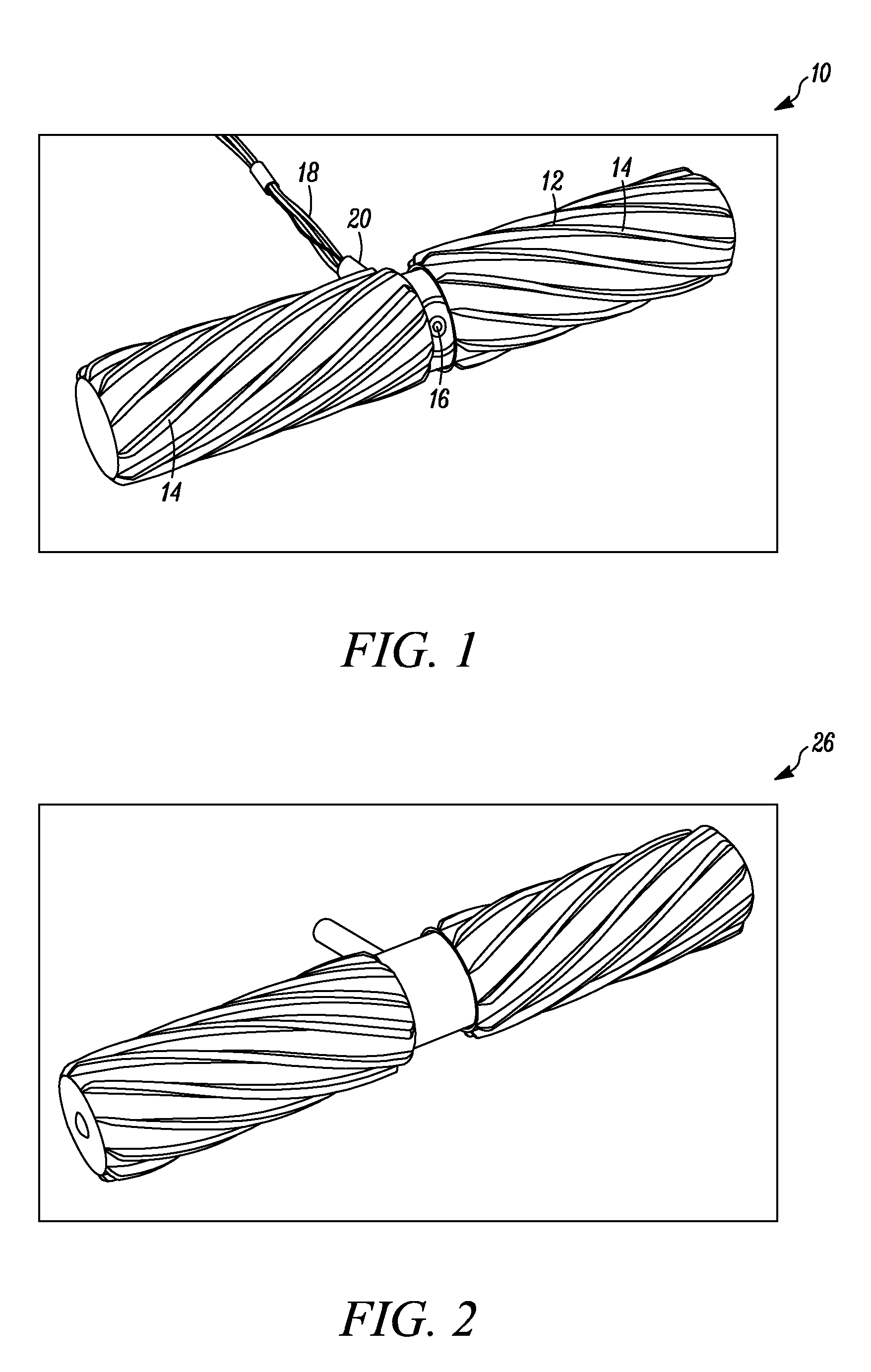Magnetically coupleable robotic surgical devices and related methods
a robotic surgical device and magnetic couple technology, applied in the field of laparoscopic surgery robotic surgical devices, can solve the problem of not being able to position the operation arm within the body
- Summary
- Abstract
- Description
- Claims
- Application Information
AI Technical Summary
Problems solved by technology
Method used
Image
Examples
example 1
[0338] Motor Torque
[0339] One factor to consider in the development of the mobile robotic devices was the amount of torque needed to move the device.
[0340] To calculate the needed torque, a free-body diagram of the robot sitting motionless on a slope was used to calulate the torque required to keep the robot stationary on the slope. This calculation would be the stall torque that the motor would need (provided that the friction of the surface was enough to prevent the wheels from slipping). The free-body diagram is shown below in FIG. 29.
[0341] From this free-body diagram the following equations were written:
(W sin θ)r=(ma)+ / α+τ
W sin θ−f=ma
W cos θ=N
[0342] This results in the following:
τ=(W sin θ)r
[0343] where [0344] W is the weight of the cylinder, [0345]θ is the angle of the slope, [0346] r is the radius of the cylinder, [0347] m is the mass of the cylinder, [0348] a is the acceleration of the cylinder, [0349] l is the moment of inertia of the cylinder, [0350]α is the angul...
example 2
[0370] In this example, a velocity analysis was performed on a manipulator arm for a mobile robot, according to one embodiment discussed above.
[0371] When performing such an analysis, it was helpful to define a matrix quantity called the Jacobian. The Jacobian specifies a mapping from velocities in joint space to velocities in Cartesian space. The Jacobian can be found for any frame and it can be used to find the joint torques, discussed infra.
[0372]FIG. 7B depicts a schematic of the manipulator used to find the Jacobian in this example. For additional information on the Jacobian, see “Introduction to Robotics” by John J. Craig.
[0373] The fundamental equations used in finding the Jacobian are: Vi+1i+1= ii+1R·(Vii i+ωi×Pi+1i)ωi+1i+1= ii+1R·ωii+θ.i+1·i+1Zi+1 iV=iJ(θ)θ.01R=[c θ1-s θ20s θ1c θ10001]⇒10R=[c θ1s θ10-s θ1c θ10001]12R=[ 0-1000-1100 ] · [ c θ2-s θ20s θ2c θ20001 ]=[-s θ2-c θ2000-1c θ2-s θ20]⇒21R=[-s θ20c θ2-c θ20-...
example 3
Methods and Materials
[0532] The goal of the current study is to demonstrate the capability of introducing a mobile robot into the abdominal cavity through the esophageal opening.
[0533] In this study we used the mobile robotic device depicted in FIG. 45, which was capable of transgastric exploration under esophagogastroduodenoscopic (EGD) control. The robot was 12 mm in diameter and 35 mm long. The helical wheel profile provided sufficient traction for mobility without causing tissue damage. Two independent motors controlled the wheels, thereby providing forward, backward, and turning capability. The robot tail prevented the counter-rotation of the robot's body when the wheels were turning. The entire length of the robot was 75 mm. This robot was tethered for power during the porcine surgery.
[0534] An anesthetized pig was used as the animal model. The 60 lb. pig was fed Gatorade and water for 36 hours prior to the procedure. A sterile overtube was advanced into the pig's stomach ...
PUM
 Login to View More
Login to View More Abstract
Description
Claims
Application Information
 Login to View More
Login to View More - R&D
- Intellectual Property
- Life Sciences
- Materials
- Tech Scout
- Unparalleled Data Quality
- Higher Quality Content
- 60% Fewer Hallucinations
Browse by: Latest US Patents, China's latest patents, Technical Efficacy Thesaurus, Application Domain, Technology Topic, Popular Technical Reports.
© 2025 PatSnap. All rights reserved.Legal|Privacy policy|Modern Slavery Act Transparency Statement|Sitemap|About US| Contact US: help@patsnap.com



